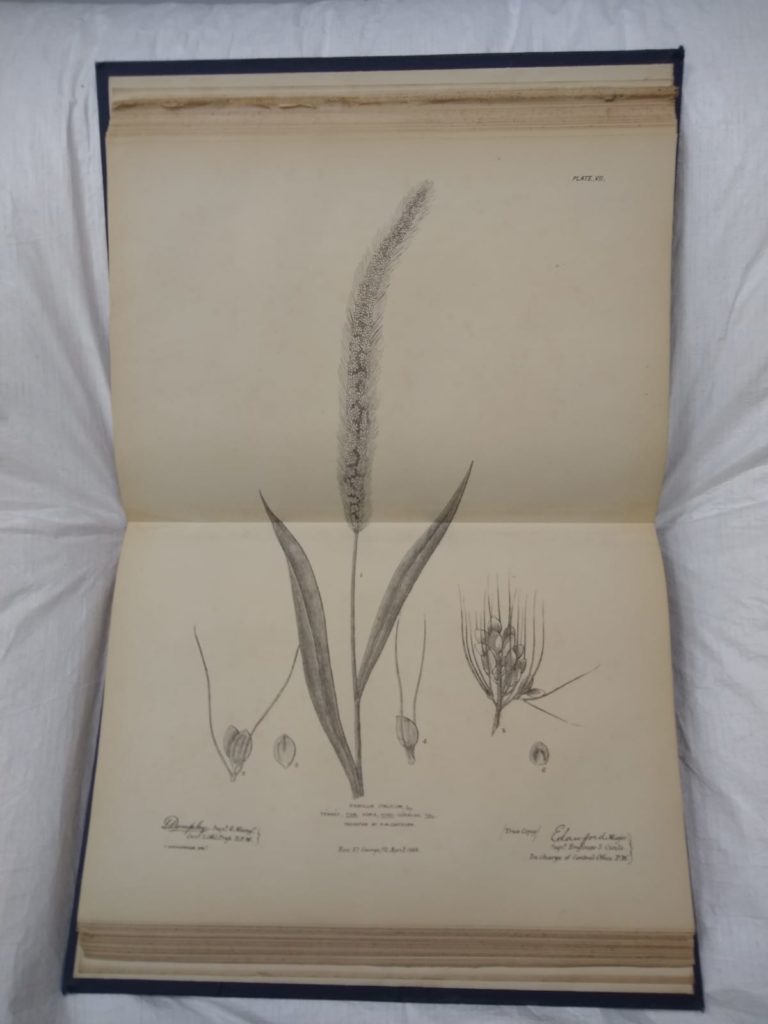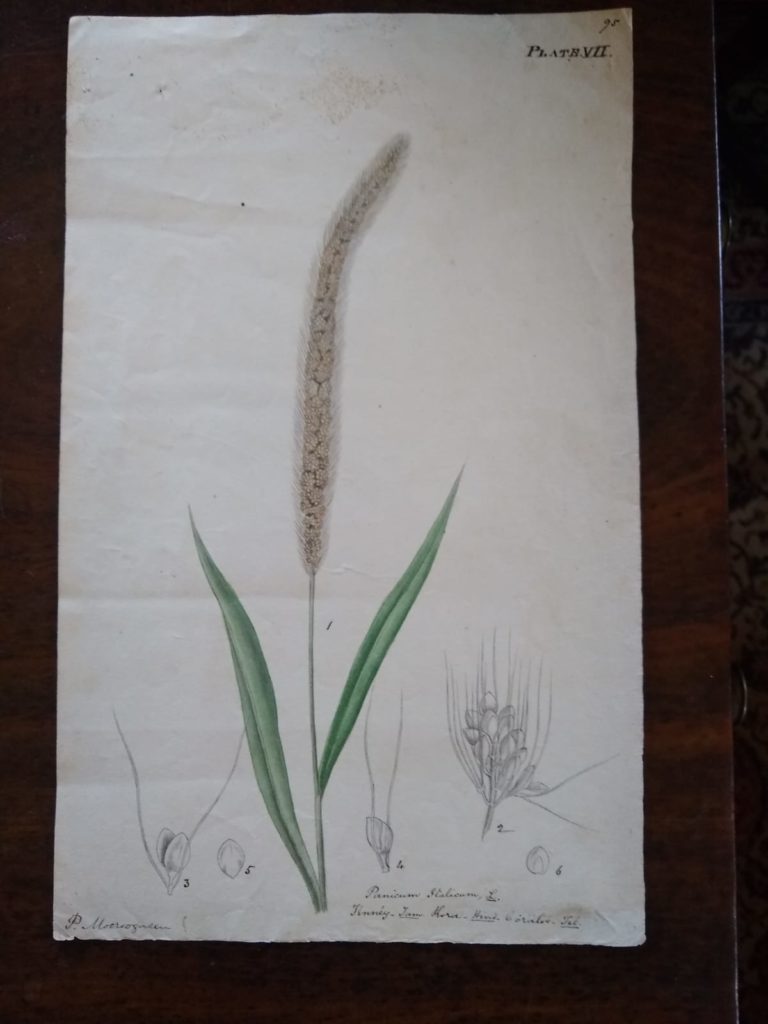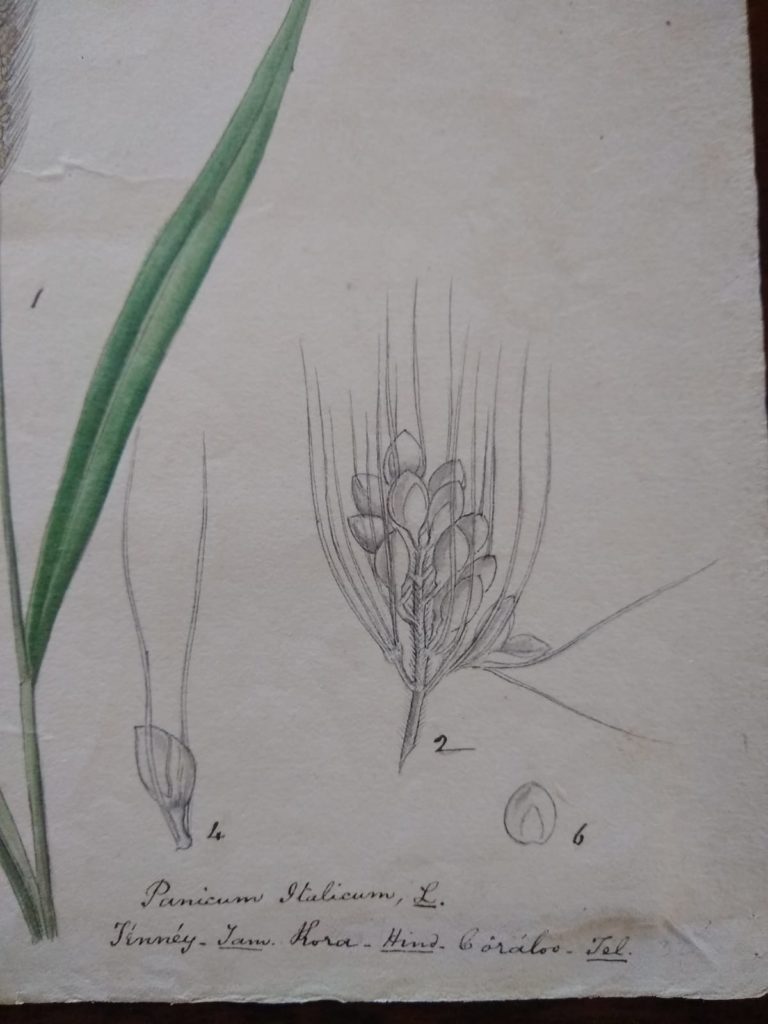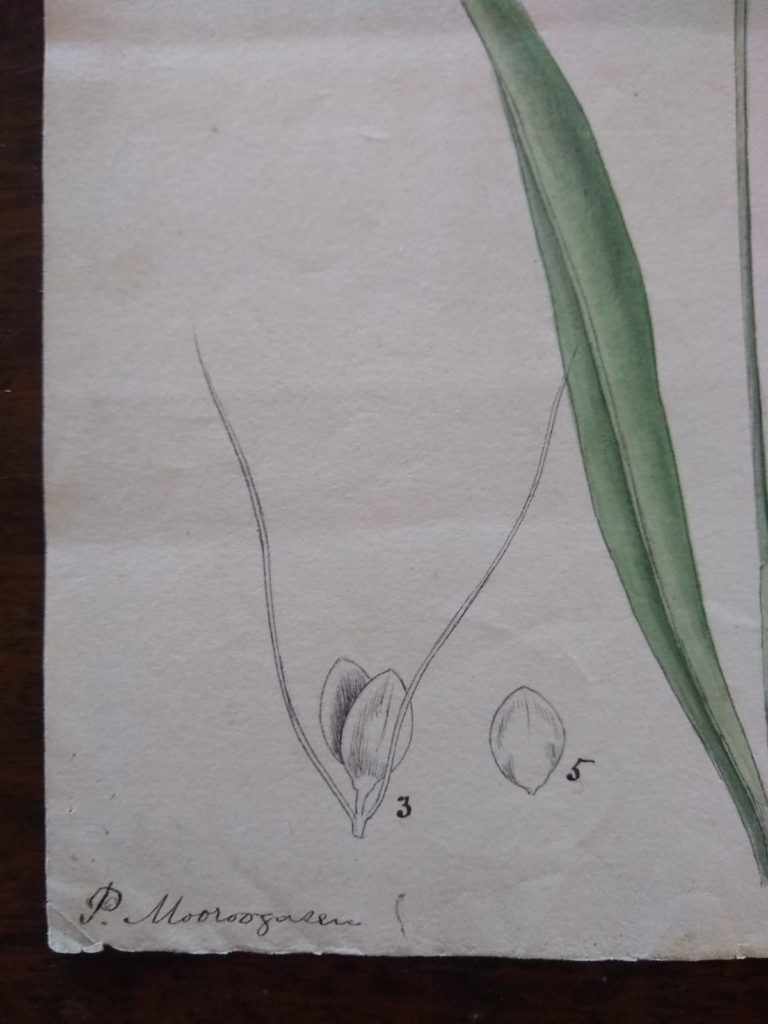During my work on Hugh Cleghorn I became very interested in the Madras School of Art, the first of its type in India, established on 1 May 1850 by Cleghorn’s friend the Scottish surgeon Alexander Hunter. In its first intake was P. Mooroogasen Moodelliar, who made botanical drawings for Cleghorn at the Madras Medical College and the Agri-Horticultural Society, as well as for other private patrons. Some 60 drawings in Cleghorn’s collection can be attributed to him, of which several were published under his name in articles by Cleghorn. In 1853 the artist made a series of 42 exquisite grey-wash drawings (now in the British Library) of the magnificent carvings excavated by Sir Walter Elliot from the great Buddhist stupa at Amaravati. These were commissioned by Edward Green Balfour, another Company surgeon with wide interests, who was superintendent of the Madras Museum.
Modelled on the 1851 Great Exhibition in Hyde Park, substantial exhibitions of natural products, arts, manufactures and crafts took place in the Banqueting House in Madras in 1855 and 1857. Cleghorn was heavily involved in the first of these, at which botanical drawings by two of his artist proteges were exhibited, both of whom received an ‘Honourable Mention’ – 14 by Govindoo and 27 by Mooroogasen. By time of the 1857 exhibition Cleghorn had been appointed Conservator of Forests for Madras leading to heavy commitments; he therefore had no role in its section devoted to ‘Substances Used for Food’. First on the list of its jury members was Lt. Col. Arthur McCally who in 1860 became president of the Agri-Horticultural Society. Its second member was Colonel Francis Archibald Reid, another active A-H Society member who, like Cleghorn and Robert Wight, had at one point acted as the Society’s Secretary. The curator of the Society’s garden, Andrew Thomas Jaffrey, was also a jury member, whose ‘Reporter’ was Cleghorn’s Medical College colleague John Emilius Mayer, a Company surgeon who ran the College’s toxicology department and courses in practical chemistry.

Exhibited in the section was a set of ten drawings of cereal crops by Mooroogasen, which were lithographed under the direction of John Dumphy (who had lithographed many of Govindoo’s drawings for Wight) for the exhibition’s published report at the Fort St George Lithographic Press. Due to Cleghorn’s lack of involvement with the 1857 exhibition these drawings did not end up in his collection and in 2016 I wrote that ‘the whereabouts of the original drawings is unknown’. In October last year I was approached by a dealer in Sussex who had acquired some drawings by Mooroogasen and when he sent me photos I realised that they were seven of the ten missing cereal drawings (nos. 2, 3, and 5 must at some stage have been lost).
The report on this section of the exhibition is one of the longest and most elaborate, and includes chemical analyses of the food grains undertaken by J.E. Mayer. Mayer apologised for his lack of botanical knowledge and something seems to have gone astray with the specimens given to Mooroogasen for drawing as the vernacular names do not always correspond with what is illustrated. The lithographs show: 1. rice (Oryza sativa); 2. ragi or finger millet (Eleusine coracana); 3. spiked millet (labelled Penicillaria spicata, now Cenchrus americanus); 4–6. three varieties of sorghum (Sorghum vulgare and S. sacchartum, now Sorghum bicolor); 7. foxtail or Italian millet (Panicum italicum, now Setaria italica); 8. waragoo (labelled Panicum miliaceum, but in fact Paspalum scrobiculatum); 9. millet (labelled Panicum milare, actually P. miliaceum); 10. ‘bonta shama’ (labelled Panicum frumentaceum now Echinochloa colonum, but the drawing shows a ripe spike of Setaria italica).

By a rather circuitous route I was fortunate to be able to acquire the drawing of Setaria italica, which shows the spike-like panicle at an immature stage. The partial inflorescences later swell, completely hiding the pedicel bristles, to give a lobed form to the spike familiar as the ‘millet’ fed to canaries and budgerigars. Whereas the spikelets of most members of the genus are deciduous, this one has been selected over at least 5000 years to retain them, so that they can be threshed for human food. The foxtail millet is a cultigen, probably derived from Setaria viridis, which may have had several distinct origins in Asia and Europe. One of my favourite books published in Madras is the five-volume, second edition of E.G. Balfour’s fascinatingly miscellaneous Cyclopaedia of India. The volume that includes his account of Panicum italicum starts with ‘NA … A wild sheep of Ladak’ and ends with ‘RYOTWARI. A revenue term applied to the system under which the land taxes of the Madras Presidency are collected’. In the book Balfour reported that in Europe the cereal was used to make a ‘heavy, disagreeable bread’ but that for ‘purposes of pastry it is very little inferior to wheat, and when boiled with milk, forms a light and pleasant meal for invalids’. In the Subcontinent, where he wrote that it was made into cakes and porridge, it is cultivated up to an altitude of 2600 metres in the Himalaya, under a wide variety of local names including kora (Hindi), koraloo (Telugu), navany (Kannada) and tennay (Tamil).
Mooroogasen Moodelliar (both names in a variety of transliterations) was one of the Madras School of Art’s earliest and most talented students. In 1851 he won a ten-rupee prize and stayed on as a teacher where, for eight rupees per month, he superintended the lithographic transfer department. He later taught botanical and anatomical drawing and was still in the lithographic transfer department in 1865 after which he disappears from the historical record. The school had two sections, the original one was for fine art, with an industrial section added by Hunter the following year. Initially funded by Hunter himself, it was later taken over by the Madras government. The aim was to instruct Indian, European and mixed-race pupils in art, craft and design, in order to improve their job prospects – it was enormously successful and in its first year had 180 pupils. Students like Mooroogasen took on private work in addition to his teaching role, and others got jobs with firms designing silver and furniture, with publishers and government departments. The name, now usually spelt Mudaliar, is that of a group of an upper, but non-Brahmin, caste originally of the land-holding Vellalar group; but in the nineteenth century individuals worked as army officers, in bureaucratic positions and as politicians and scholars. It is of interest that the Madras School of Art was able to recruit students from such a background.
There has been much discussion over the role that the establishment and development of Western-style art schools had on the traditions of Indian artistic practice, largely, and for good reasons, negative. However, there is much to admire in Hunter’s motives for the establishment of the Madras School of Art and these drawings represent a fascinating example of the sort of work produced at this critical juncture in Indian art history. Whereas Hunter encouraged students to draw from native Indian plants, and to use abstractions therefrom in making designs for items as varied as pottery and picture frames, the cereal drawings are firmly in the tradition of western scientific illustration – not least in the exquisite ink floral analyses, which must have been made with the help of a lens or low-powered microscope. It is only Mooroogasen’s signature that shows them to be the work of an Indian draftsman.


There is no record of how the drawings turned up in a Sussex saleroom in 2022, but presumably ultimately from the dispersal of the archive of one of the members of the committee of ‘Substances used for Food’ at the 1857 Madras Exhibition. It may or may not be significant that the first member of the committee, Arthur McCally, who ended up as a Major General, died in Hastings in 1867.
